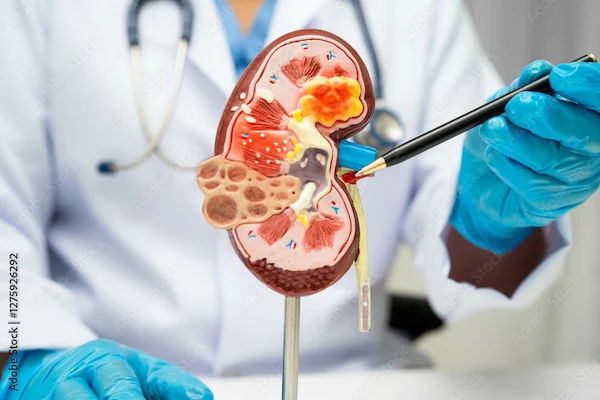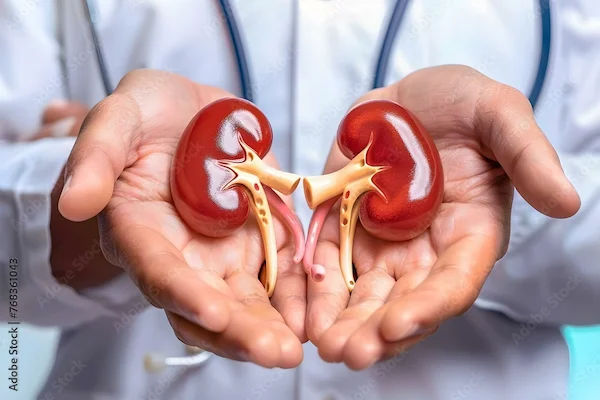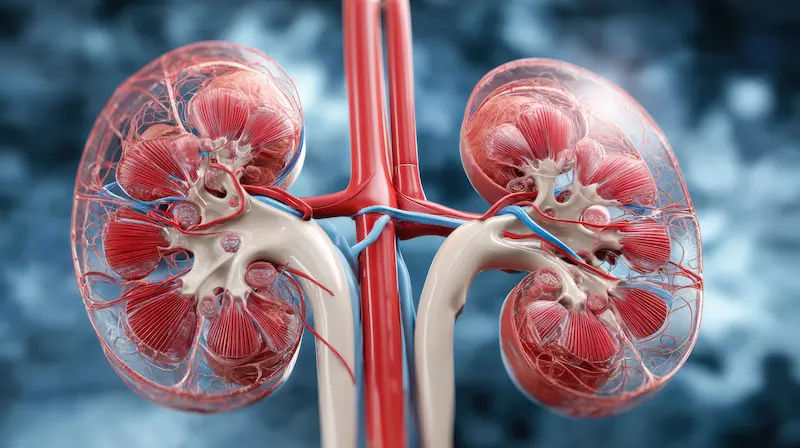Guide to Dialysis Types Risks And Complications
Learn about dialysis types, including haemodialysis and peritoneal dialysis, their risks, complications, and how to live well on treatment. Discover lifestyle tips, prevention methods, and decision-making support for patients in India and beyond.


Introduction
Dialysis can feel overwhelming when you first hear about it—but the right information makes it manageable. This guide explains dialysis in simple terms: what it is, the main types, and the risks and complications to watch for. We’ll walk through haemodialysis (in-centre and at home) and peritoneal dialysis, compare their pros and cons, and explain what daily life looks like on treatment. You’ll learn how vascular access affects your risks, how to prevent infections like peritonitis, and how to handle common side effects.
We also cover decision-making tools, costs and access (including India-specific insights), and how to plan for travel, work, and family life. If you’re worried about symptoms, risks, or lab results, you can consult a doctor online with Apollo 24|7 for timely guidance and support.
Consult a Top Nephrologist for Personalised Advice
Dialysis Basics: What It Is, Why It’s Needed, and When It Starts
Understand when dialysis becomes necessary and how it works to replace key kidney functions.
Dialysis is a life-sustaining therapy used when kidneys can no longer filter waste and extra fluid effectively—most often
in end-stage kidney disease. Healthy kidneys remove toxins, balance minerals, regulate blood pressure, and help
maintain bone and blood health. When they fail, toxins and fluid build up, causing fatigue, swelling, nausea, and
confusion.
When to start dialysis depends on symptoms, kidney function (eGFR), and lab results rather than a single number.
Common triggers include severe fatigue, fluid overload, and high potassium.
How dialysis works:
Haemodialysis: Blood is filtered through a machine that removes waste and excess water before returning it to the body.
Peritoneal dialysis: A sterile fluid in the abdomen filters waste through the peritoneum, which acts as a natural membrane.
Unique insight: Dialysis isn’t always permanent. In some cases of acute kidney injury, it may be temporary. Planning early and learning about both types of dialysis helps prevent complications later.
Types of Dialysis Explained: Haemodialysis vs Peritoneal Dialysis
Explore the main dialysis methods and their advantages for different lifestyles and medical needs.
Haemodialysis (HD)
Haemodialysis usually takes place three times per week in a dialysis centre, each session lasting about 3–5 hours. In-
centre HD offers professional supervision and social interaction but requires fixed schedules and travel.
Home haemodialysis (HHD) offers flexibility and more frequent, gentler treatments. With proper training, patients can
achieve better blood pressure control and quality of life, though it may not suit everyone.
Peritoneal Dialysis (PD)
Peritoneal dialysis has two main forms:
- Continuous Ambulatory PD (CAPD): Manual exchanges done throughout the day.
- Automated PD (APD): A cycler machine performs exchanges overnight.
PD allows more independence and flexibility but requires strict hygiene to prevent infections like peritonitis.
Unique insight: Think of your first dialysis as a “trial period.” Many patients later switch from one type to another as
needs evolve. Planning early ensures smoother transitions.
Access Matters: Fistulas, Grafts, Catheters, and PD Catheters
Your access point is your dialysis lifeline—understanding it can help prevent serious infections.
For haemodialysis, the best long-term access is an arteriovenous fistula (AVF), which connects an artery and vein in the
arm. It has the lowest infection risk but takes weeks to mature. Arteriovenous grafts (AVG) are synthetic alternatives
used when veins are unsuitable but carry a higher clotting.
Central venous catheters (CVCs) are temporary solutions but have the highest infection rates. For peritoneal dialysis, a
PD catheter is placed in the abdomen and requires careful daily hygiene.
Access care checklist:
- Check fistula/graft for vibration and redness.
- Keep catheter sites clean and dry.
- Report fever or swelling immediately.
Unique insight: Ask about “fistula-first, catheter-last” programmes—early planning for vascular access reduces infection risks and hospital stays.
Risks and Complications: What to Expect and How Often
Knowing the common complications helps you spot and prevent them early.
Short-term effects
- Haemodialysis: Low blood pressure (hypotension), cramps, nausea, and headaches.
- Peritoneal Dialysis: Cloudy fluid or abdominal pain (signs of peritonitis), hernias, and fluid leaks.
Long-term risks
Both types can lead to anaemia, cardiovascular disease, mineral imbalance, and infections. Long-term HD may cause
dialysis-related amyloidosis, while PD can lead to weight gain due to glucose in dialysate.
Unique insight: Understanding your risk profile—diabetes, age, and access type—can help tailor prevention strategies
like vaccination, diet control, and access to care.
Living Well on Dialysis: Diet, Fluids, Medications, Work, and Travel
With good habits and planning, many people lead active lives on dialysis.
A renal-friendly diet limits potassium, phosphorus, sodium, and fluids while providing enough protein. PD patients often
enjoy more fluid flexibility, while HD patients must track fluid intake carefully.
Key medications may include phosphate binders, vitamin D analogues, erythropoiesis-stimulating agents, and blood pressure drugs.
Mental health is vital—many people experience fatigue or anxiety, but support groups and counselling help.
Travel tips:
- For HD, arrange “transient dialysis” at your destination in advance.
- For PD, carry extra supplies and maintain sterile technique.
Unique insight: A small “travel kit” with spare dressings, gloves, and hand sanitiser helps protect your access while away from home.
Choosing the Right Type for You: A Decision Framework
Your medical condition, lifestyle, and personal goals should guide your dialysis choice.
Consider:
- Medical factors: Prior surgeries, heart disease, or vascular access quality.
- Lifestyle: Independence level, home support, and flexibility needs.
- Work/sleep patterns: APD suits those who prefer overnight treatment.
In India, government schemes and private insurance may cover sessions, but costs like travel and medicines can vary. Peritoneal dialysis can be cost-effective for rural patients, while telehealth through Apollo24|7 helps reduce travel.
Unique insight: Write down your top three life goals—such as maintaining work, minimising travel, or spending evenings with family—and share them with your doctor. It makes your choice clearer and more personal.
Prevention and Management: Lowering Risks Day by Day
Every day care and attention help prevent most dialysis-related complications.
Infection prevention
- Practise hand hygiene before touching your access.
- Use masks during PD connections.
- Keep catheters clean and dry.
- Stay up to date on vaccines (influenza, pneumococcal, hepatitis B).
Managing symptoms
- Low blood pressure: Avoid rapid fluid removal and large fluid gains.
- Cramps: Stretching, gradual fluid control, and temperature adjustments.
- Itching: Phosphate control, moisturisers, and prescribed medication.
Exercise and sleep
Moderate activity improves mood and circulation. Address sleep issues like restless legs with your care team.
Unique insight: Keep a “3-number card” with your target dry weight, post-dialysis blood pressure, and access type—this
speeds up emergency care.
Conclusion
A strong partnership with your care team makes dialysis safer, more flexible, and easier to live with. Understanding the different types—haemodialysis and peritoneal dialysis—helps you weigh their benefits and manage side effects. Caring for your access, following a tailored diet, and staying up to date with vaccines go a long way in preventing complications.
With the right plan, many people on dialysis continue to work, travel, and enjoy fulfilling lives. If symptoms change or new issues arise, consult a doctor online with Apollo 24|7—they also provide home collection for key tests like creatinine, potassium, and HbA1c. Remember: with knowledge, teamwork, and self-care, you can live well on dialysis and prepare confidently for future options such as transplantation.
Consult a Top Nephrologist for Personalised Advice
Consult a Top Nephrologist for Personalised Advice
Dr Ch Sashidhar
Nephrologist
20 Years • MBBS, MD General Medicine, DNB, Nephrology
Secunderabad
Apollo Hospitals Secunderabad, Secunderabad

Dr Praveen Kumar Etta
Nephrologist
10 Years • MBBS,MD DM(SGPGI) FORMER ASST(PIMS)
Hyderabad
Apollo Spectra Ameerpet, Hyderabad

Dr. Pardha Saradhi
Nephrologist
9 Years • MBBS, MD-DNB (Gen. Med.), DNB (Nephro)
Hyderabad
Apollo Hospitals D R D O kanchanbagh, Hyderabad
(75+ Patients)

Dr. Aswini Kumar Panigrahi
Nephrologist
23 Years • MBBS, MD (Int. Med.), DNB Nephro
Hyderabad
Apollo Hospitals Jubilee Hills, Hyderabad
(225+ Patients)

Dr. Manju Kamal
Nephrologist
12 Years • MBBS,MD(General Medicine), DNB,DM(Nephrology)
Angamaly
Apollo Hospitals Karukutty, Angamaly
Consult a Top Nephrologist for Personalised Advice
Dr Ch Sashidhar
Nephrologist
20 Years • MBBS, MD General Medicine, DNB, Nephrology
Secunderabad
Apollo Hospitals Secunderabad, Secunderabad

Dr Praveen Kumar Etta
Nephrologist
10 Years • MBBS,MD DM(SGPGI) FORMER ASST(PIMS)
Hyderabad
Apollo Spectra Ameerpet, Hyderabad

Dr. Pardha Saradhi
Nephrologist
9 Years • MBBS, MD-DNB (Gen. Med.), DNB (Nephro)
Hyderabad
Apollo Hospitals D R D O kanchanbagh, Hyderabad
(75+ Patients)

Dr. Aswini Kumar Panigrahi
Nephrologist
23 Years • MBBS, MD (Int. Med.), DNB Nephro
Hyderabad
Apollo Hospitals Jubilee Hills, Hyderabad
(225+ Patients)

Dr. Manju Kamal
Nephrologist
12 Years • MBBS,MD(General Medicine), DNB,DM(Nephrology)
Angamaly
Apollo Hospitals Karukutty, Angamaly
More articles from Kidney Disease
Frequently Asked Questions
1) Which is better: haemodialysis or peritoneal dialysis?
There’s no one-size-fits-all answer. It depends on your health, home support, and lifestyle preferences. PD offers independence and flexibility; HD provides structured support in clinics.
2) What are the most common dialysis side effects?
Haemodialysis may cause low blood pressure, cramps, and headaches; peritoneal dialysis can lead to peritonitis and catheter infections. Early reporting and prevention reduce risks.
3) How do I lower the risk of peritonitis on PD?
Maintain strict hand hygiene, use masks during connections, and check your exit site daily for redness or drainage.
4) Can I travel while on dialysis?
Yes. Plan ahead for dialysis sessions at your destination, protect your access, and carry a medical summary.
5) How much does dialysis cost, and is it covered in India?
Coverage varies by scheme or insurer. Government programmes and private insurance often cover sessions, but transport and medicines may cost extra. Consult Apollo 24|7 for clarity and lab home collection services.
.webp)



